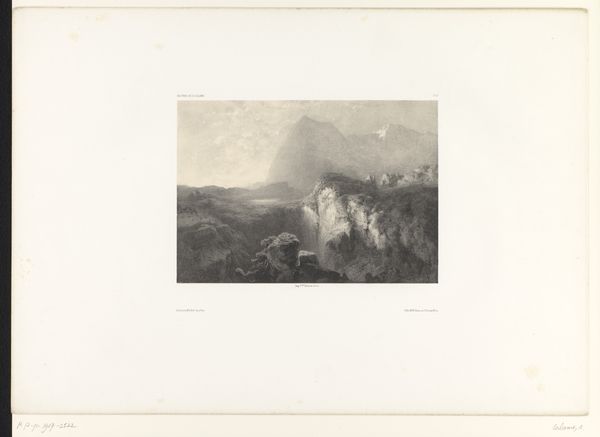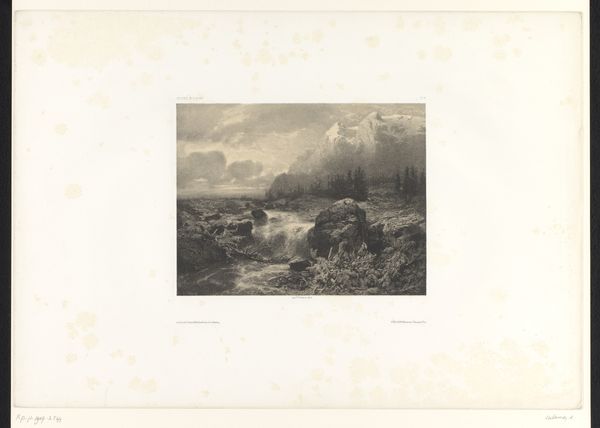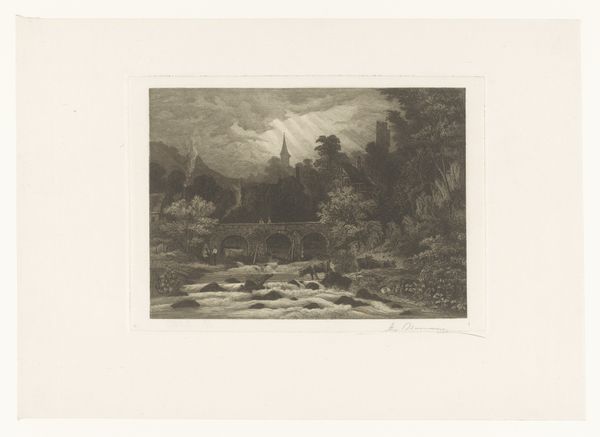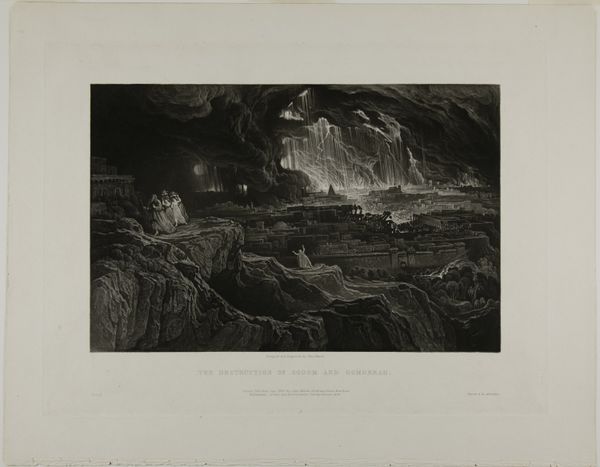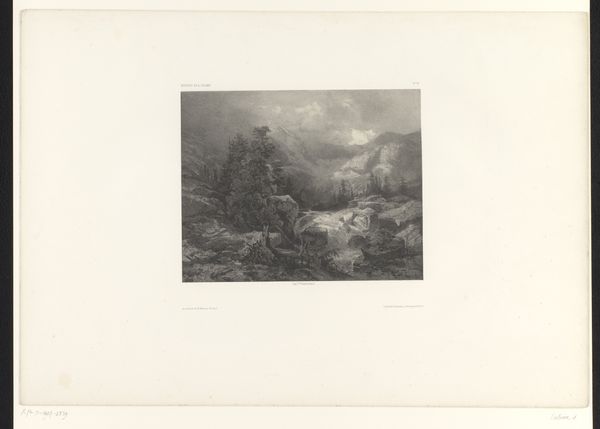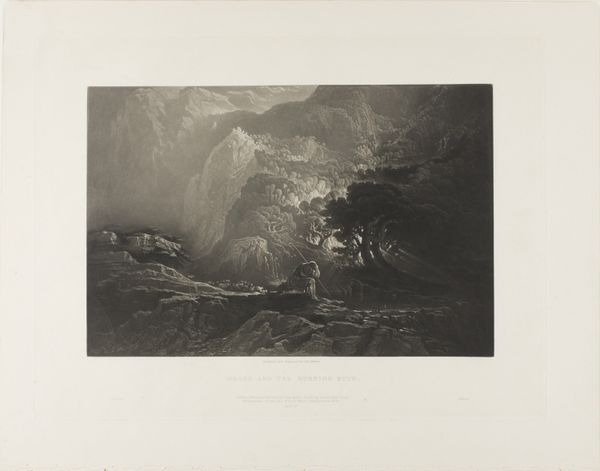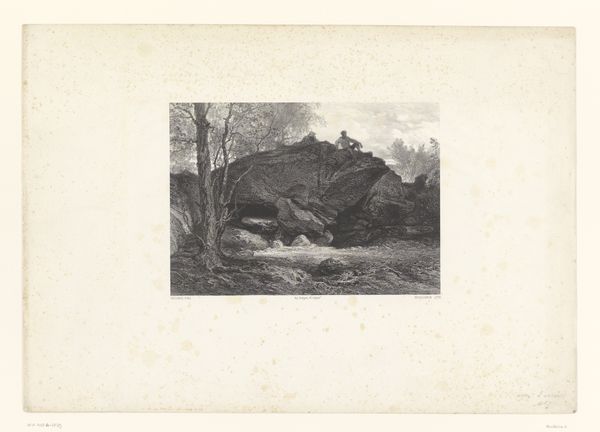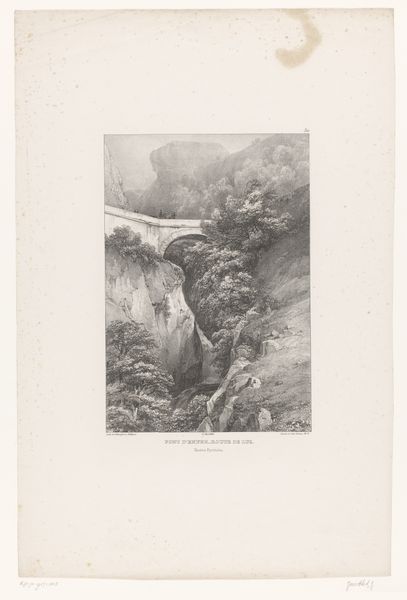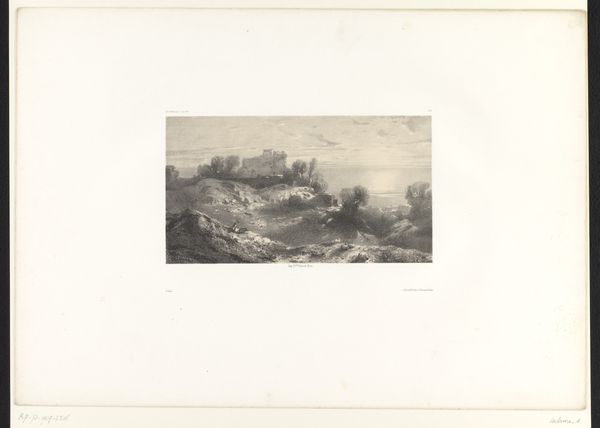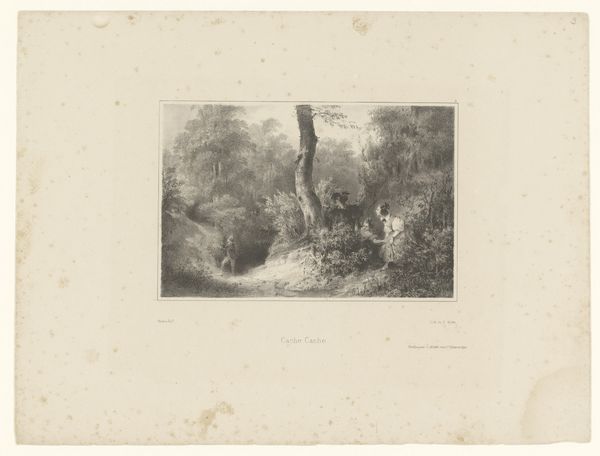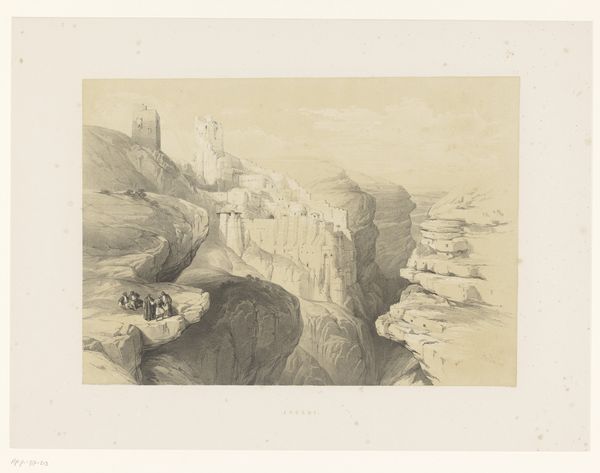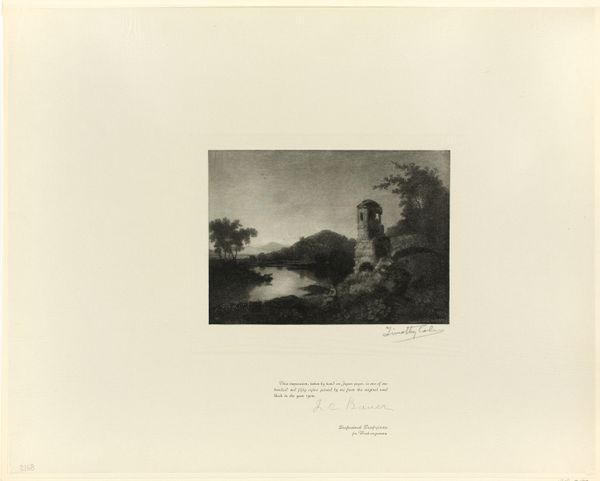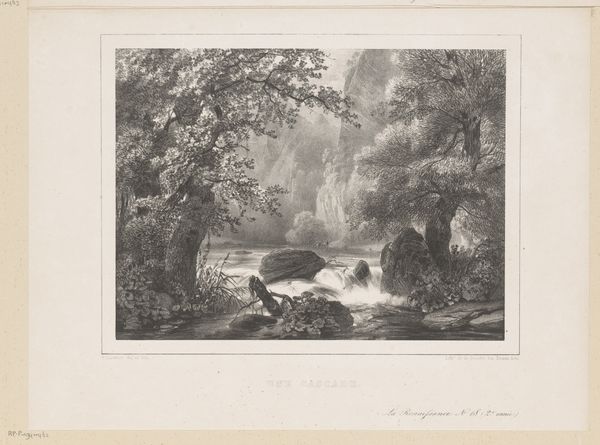
Dimensions: 288 mm (height) x 401 mm (width) (billedmaal)
Curator: Here we have "Tidlig morgen ved middelhavets kyst," or "Early Morning by the Mediterranean Coast," a lithograph from the 1880s by Adolph Kittendorff. Editor: My first impression is one of tranquility, almost melancholic. The soft light and monochromatic palette evoke a sense of timelessness and isolation. It makes me wonder about the relationship between human structures and the landscape, the old and the new. Curator: Indeed, Kittendorff, active in Rome during that period, often depicted such idyllic scenes, playing into the Romanticism that defined much of the era’s artistic sensibility. Lithography allowed for a wider distribution of such images, reinforcing certain visual tropes around travel and leisure, specifically the Mediterranean as a site of cultural pilgrimage. Editor: That’s interesting. Pilgrimage, and to what end? This scene, in its supposed calm, perhaps conceals the colonial gaze inherent in depicting such ‘untouched’ landscapes for European consumption. It's impossible not to read images from this period through the lens of power dynamics and representational politics. Who is afforded the luxury to observe, to travel, to extract beauty from these spaces? Curator: Your point raises questions about authenticity and ownership in landscape art, of course. And, while Kittendorff may have benefitted from the infrastructures of privilege, he, himself, occupied a somewhat liminal position within the artistic hierarchy, due to the mechanical reproduction of his works. So the distribution of images like this cuts both ways, democratizing access on the one hand, and potentially, re-inscribing asymmetries of power, on the other. Editor: Absolutely. It becomes crucial, then, to analyze the narratives embedded in these works. How do they contribute to our understanding—or misunderstanding—of cultures and environments outside the European centers of power? And in that spirit of accessibility you invoked: what opportunities arise in challenging the historical power relations by decentering the artist himself and prioritizing unheard voices who dwell here by this coast, today? Curator: A pertinent question as we consider the continued relevance of art from this period. The layering of time and ideology within this image provokes vital dialogue, doesn’t it? Editor: Indeed, grappling with this historical depiction fosters much-needed conversations about how we choose to see, represent, and interact with each other.
Comments
No comments
Be the first to comment and join the conversation on the ultimate creative platform.
